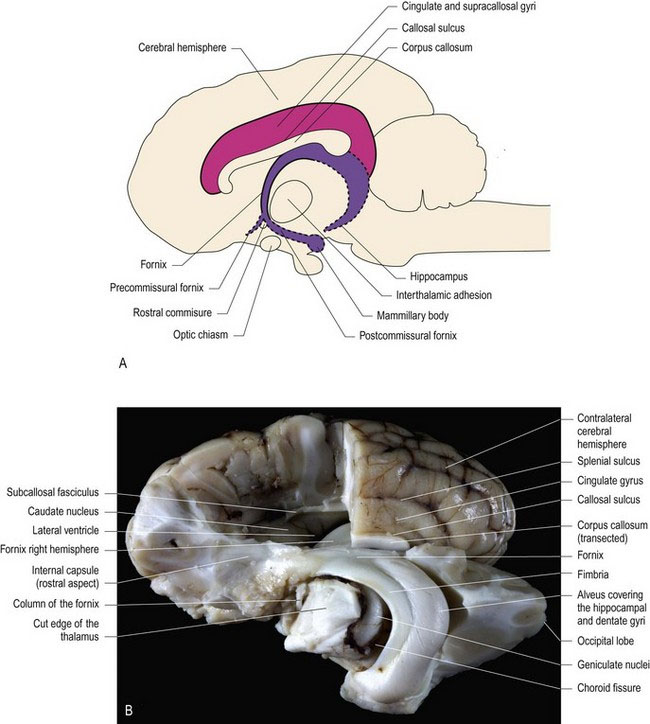Chapter 11 Behaviour, emotion and arousal
Key points
 Behaviour and emotion are associated with the limbic system, which is found at the limbus (border) between the cerebrum and thalamus.
Behaviour and emotion are associated with the limbic system, which is found at the limbus (border) between the cerebrum and thalamus.
 The limbic system includes a variety of telencephalic gyri and nuclei, and structures of the thalamus.
The limbic system includes a variety of telencephalic gyri and nuclei, and structures of the thalamus.
 Lesions in the limbic system in animals can cause changes in behaviour and emotional responses.
Lesions in the limbic system in animals can cause changes in behaviour and emotional responses.
 The ascending reticular activating system (ARAS) of the brainstem determines arousal (consciousness/awareness) levels and regulates sleep. It is stimulated by collateral axons of most sensory fibres travelling to the thalamus.
The ascending reticular activating system (ARAS) of the brainstem determines arousal (consciousness/awareness) levels and regulates sleep. It is stimulated by collateral axons of most sensory fibres travelling to the thalamus.
 The ARAS functions as a triage system and ranks incoming information in terms of importance.
The ARAS functions as a triage system and ranks incoming information in terms of importance.
 The neurotransmitter hypocretin is important in controlling the sleep–wake cycle. Abnormalities can result in signs of narcolepsy-cataplexy.
The neurotransmitter hypocretin is important in controlling the sleep–wake cycle. Abnormalities can result in signs of narcolepsy-cataplexy.
Behaviour and emotion
The limbic system curves dorsally around the medial side of the cerebral hemispheres at their borders with the diencephalon. There is no generally accepted classification of its components but it is commonly thought to include the limbic lobe comprising the telencephalic structures such as the hippocampus, parahippocampal, cingulate, subcallosal and dentate gyri, the amygdaloid complex and septal nuclei (Figs. 11.1, A4-6, A13-18). Other components include subcortical, diencephalic structures, such as the mammillary bodies, epithalamus, rostral thalamic area and the interpeduncular nucleus in the midbrain. It receives, and associates, olfactory, visceral, oral, sexual, optic and auditory impulses. It projects to the hypothalamus and the brainstem, especially to those structures influencing visceral activity.
Stay updated, free articles. Join our Telegram channel

Full access? Get Clinical Tree



